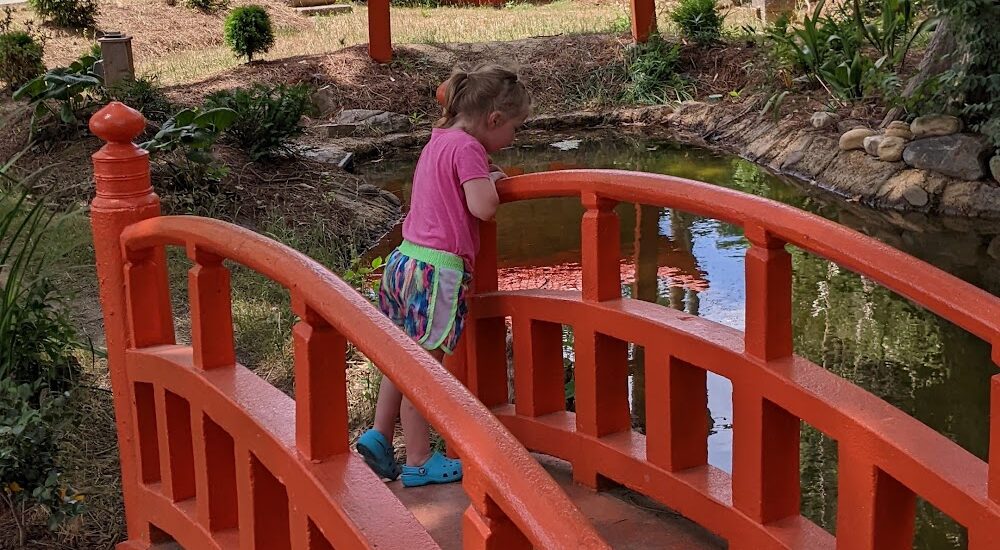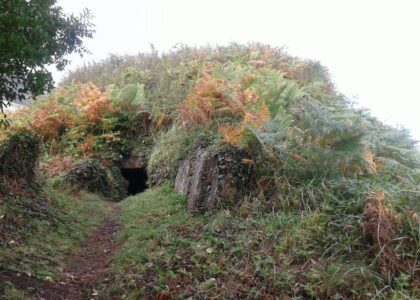Welcome to the Wells Japanese Garden in Newberry, South Carolina, a unique blend of cultural artistry and historical significance. This serene oasis was created in 1930 during the Great Depression by W. Fulmer Wells, a Newberry native and architect, who transformed part of his family estate into a Japanese garden. At a time when the country was grappling with economic hardship, Wells embarked on this project, providing a place of tranquility and reflection.
The garden’s design is a masterful example of Japanese landscaping, featuring two ponds connected by concrete bridges, including a distinctive Japanese Moon Bridge. The garden’s entrance is marked by a traditional Japanese Torii gate, a symbol of transition from the mundane to the sacred. Wells ingeniously repurposed materials from the Newberry Opera House renovation, using reclaimed posts to support the teahouse’s traditional tile roof. This clever use of materials not only highlights Wells’ resourcefulness but also serves as a testament to the community spirit of the era.
In 1980, the Wells Japanese Garden was recognized for its historical and cultural value by being listed on the National Register of Historic Places. This small but significant garden has witnessed the evolving landscape of Newberry and remains a cherished local landmark. Visitors are invited to wander along its paths, enjoy a quiet moment by the ponds, or simply appreciate the unique fusion of Southern and Japanese elements in this unexpected setting.
The garden stands as a reminder of the cultural connections that transcend geographical boundaries and the lasting impact of individual creativity and vision. Whether you’re a local resident or a visitor, the Wells Japanese Garden offers a peaceful retreat and a glimpse into a fascinating chapter of Newberry’s history.






